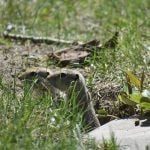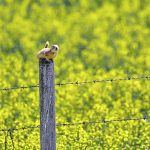The Saskatchewan Association of Rural Municipalities is taking a verbal commitment from the federal agriculture minister on strychnine use as a good sign.
Tag Archives strychnine

Rural officials hopeful strychnine use will resume
Federal ag minister opens door for possible emergency registration to address burgeoning gopher populations

Prof urges caution when using zinc phosphide
Vet says the main strychnine replacement for controlling Richardson’s ground squirrels can also poison other animals
Strychnine might be out as a pest control tool in Canada but one of the main replacement rodenticides to control Richardson’s ground squirrel populations needs special attention in its use as well, says a University of Saskatchewan veterinarian. Dr. Vanessa Cowan, assistant professor of toxicology at the Western College of Veterinary Medicine, said zinc phosphide […] Read more
You can’t gopher strychnine anymore
James Tansey, Saskatchewan provincial specialist of insect and pest management, said the Saskatchewan government did not support the removal of strychnine and it presented data to the PMRA that showed the product could be used safely and effectively for the control of gophers.

Gopher control enters the post-strychnine era
Product $/acre
James Tansey, Saskatchewan’s insect and vertebrate pest management specialist, said all the registered products in the study worked, but based on the data, he recommended those containing zinc phosphide.
Loss of strychnine a long time coming
Pesticide was deregistered from 1992-2001, and the process to ban the product began again in 2020 after a 2018 review
The pesticide, registered in 1928, had already been deregistered from 1992 to 2001 over environmental concerns and a 2018 review found the same issues with the potential for secondary poisoning.


